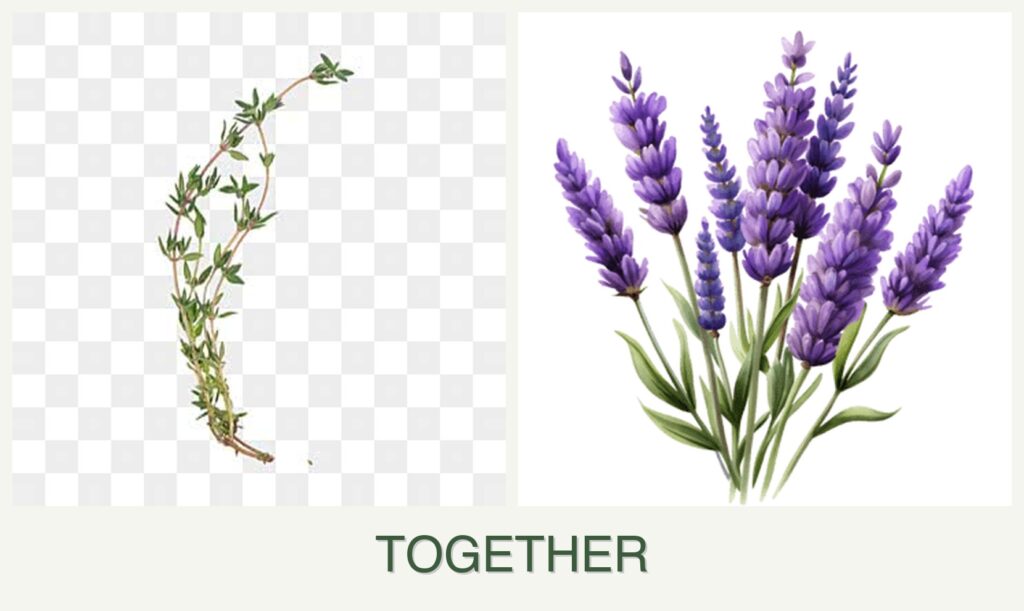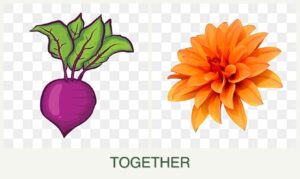
Can you plant thyme and lavender together?
Can You Plant Thyme and Lavender Together?
Companion planting is a popular practice among gardeners seeking to enhance plant health and yield. By strategically pairing plants, gardeners can create a harmonious environment that maximizes growth and minimizes pests. This article explores whether thyme and lavender make good companions and provides insights into their compatibility.
Compatibility Analysis
Yes, you can plant thyme and lavender together! These two Mediterranean herbs share similar growth requirements, making them excellent companions. Both plants thrive in full sun, prefer well-drained soil, and require minimal watering, which simplifies their care when grown together.
Key Factors
- Growth Requirements: Both thyme and lavender need full sun and well-drained, slightly alkaline soil. They are drought-tolerant and prefer less frequent watering once established.
- Pest Control: Lavender’s strong scent deters many garden pests, which can benefit thyme. Conversely, thyme can repel cabbage worms and other insects.
- Nutrient Needs: Both herbs have modest nutrient requirements, thriving in lean soil without excessive fertilization.
- Spacing: Proper spacing is crucial to ensure each plant receives adequate air circulation and sunlight.
Growing Requirements Comparison Table
| Factor | Thyme | Lavender |
|---|---|---|
| Sunlight Needs | Full sun | Full sun |
| Water Requirements | Low | Low |
| Soil pH and Type | 6.0-8.0, well-drained | 6.5-7.5, well-drained |
| Hardiness Zones | 5-9 | 5-9 |
| Spacing | 12-18 inches apart | 18-24 inches apart |
| Growth Habit | 6-12 inches tall, spreads | 12-36 inches tall, bushy |
Benefits of Planting Together
- Pest Repellent Properties: Lavender’s aroma repels pests like moths and fleas, while thyme deters cabbage worms and whiteflies.
- Improved Growth: Both plants benefit from similar care, allowing them to thrive with minimal intervention.
- Space Efficiency: Their compatible growth habits make them ideal for maximizing garden space.
- Soil Health Benefits: Both contribute to maintaining well-drained soil conditions.
- Pollinator Attraction: Lavender is particularly attractive to bees and butterflies, enhancing pollination in your garden.
Potential Challenges
- Competition for Resources: Ensure adequate spacing to prevent competition for sunlight and nutrients.
- Different Watering Needs: Although both are drought-tolerant, lavender may require slightly less water.
- Disease Susceptibility: Overwatering can lead to root rot in both plants.
- Harvesting Considerations: Careful planning of harvest times can prevent disruption to either plant.
Practical Solutions
- Use mulch to retain moisture and suppress weeds.
- Ensure proper drainage to prevent root rot.
- Prune regularly to maintain airflow and prevent disease.
Planting Tips & Best Practices
- Optimal Spacing: Plant thyme 12-18 inches apart and lavender 18-24 inches apart to allow for growth.
- When to Plant: Plant in spring after the last frost for optimal growth.
- Container vs. Garden Bed: Both herbs do well in containers with good drainage or garden beds.
- Soil Preparation: Amend soil with sand or gravel to improve drainage.
- Companion Plants: Rosemary and sage also pair well with thyme and lavender.
FAQ Section
-
Can you plant thyme and lavender in the same pot?
Yes, as long as the pot is large enough to accommodate their growth and has excellent drainage. -
How far apart should thyme and lavender be planted?
Space thyme 12-18 inches apart and lavender 18-24 inches apart. -
Do thyme and lavender need the same amount of water?
Both need minimal watering, but lavender may require slightly less. -
What should not be planted with thyme and lavender?
Avoid planting with moisture-loving plants like basil or mint. -
Will thyme affect the taste of lavender?
No, planting together does not affect the taste of either herb. -
When is the best time to plant thyme and lavender together?
Early spring after the last frost is ideal for planting both herbs.
By understanding the compatibility of thyme and lavender, gardeners can create a thriving herb garden that benefits from their complementary characteristics. With the right care and consideration, these herbs will flourish together, providing both beauty and utility to your outdoor space.



Leave a Reply